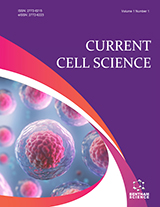
Full text loading...
We use cookies to track usage and preferences.I Understand

Jaw muscles are essential for chewing and swallowing, generating electrical signals measurable through electromyography (EMG). In food science, EMG is increasingly being used to link food texture with consumption
This study aimed to analyze chewing EMG data using signal processing and machine learning, to explore its relationship with sensory evaluation.
Participants tasted three gels with identical flavors but different colors (green, red, yellow) while EMG data were recorded. Three machine-learning classification algorithms analyzed the EMG patterns to detect potential color-based preference differences.
No strong relationship was found between EMG data and gel preferences, although the approach shows promise for investigating muscle function in food choice. Challenges arose from limited taste variability and data set size.
This research underscores EMG’s potential in studying muscle function and food-related behavior, despite limitations in using EMG data with machine learning for preference prediction.

Article metrics loading...

Full text loading...
References


Data & Media loading...